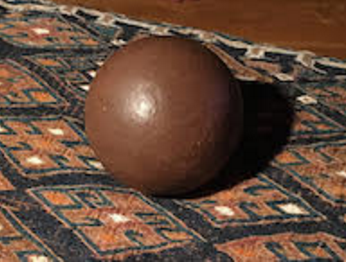The All in the Particular

Julian of Norwich, the 14th century English anchoress, or religious hermit, wrote:
“He shewed me a little thing, the quantity of an hazel-nut, in the palm of my hand; and it was as round as a ball. I looked thereupon with eye of my understanding, and thought: What may this be? And it was answered generally thus: It is all that is made. I marvelled how it might last, for methought it might suddenly have fallen to naught for little[ness]. And I was answered in my understanding: It lasteth, and ever shall [last] for that God loveth it. And so All-thing hath the Being by the love of God. In this Little Thing I saw three properties. The first is that God made it, the second is that God loveth it, the third, that God keepeth it. But what is to me verily the Maker, the Keeper, and the Lover, – I cannot tell; for till I am Substantially oned to Him, I may never have full rest nor very bliss: that is to say, till I be so fastened to Him, that there is right nought that is made betwixt my God and me.”
Julian “one-ed” with the All by contemplating the particular.
During a summer sojourn at Ghost Ranch in northern New Mexico, I gathered dark red earth into a bag and put it in the back of the car to take home. It was a sample of the Chinle Formation, a distinctive layer of lavender, red, and blue-grey soft dirt, formed from alluvium over 200 million years ago and sandwiched between layers of hard sandstone. Back in Los Angeles, I put the dirt in a bucket, added water, formed a mud ball, and began the process of making a dorodango, a Japanese art form. I shaped the ball, put dirt on the surface to get it dry, then put it in a plastic bag in the refrigerator. Hours later, I took it out of the bag, where it sweated out moisture from its interior. I spread more dirt on its surface, rubbed it smooth, and put it back in the bag. I repeated this process every day for about two weeks. Finally the ball ceased sweating in the bag, and at that point I gave it a final polish with a soft rag. The deep color of the dirt came through the shiny surface. It looked like a ceramic ball, glazed and fired in a kiln, but it was no more and no less than a handful of dirt. The process of making this dorodango was very satisfying, in a way I can barely verbalize.
In New Mexico, I gathered dirt from another source, as well: the Santuario de Chimayo, an old adobe church from the Spanish era. In the back of the sanctuary of this little church in a tiny town at the base of the mountains north of Santa Fe is a little adobe room with an earthen floor, and in the floor is a hole full of pale, pink, powdery dirt that pilgrims for 200 years have rubbed on whatever part of their body ails them. The reported cures have drawn devotees from all over the world to fill vials of the dirt to take home with them. I put the dirt into little glass vials to give to my students when they are in crisis or when they are about to begin a new venture. As is the case every time I visit the Santuario de Chimayo, I felt holiness, and palpable wholeness, in that little adobe room.
William Blake, in his poem “Auguries of Innocence”, wrote: “To see a World in a Grain of Sand, And a Heaven in a Wild Flower, Hold Infinity in the palm of your hand, And Eternity in an hour….” One way to apprehend the Universe, which is one-ed with the Divine Being that includes and enlivens all within it, is to hold reverently a handful of dirt. The Whole is in every part.
“The Universe creates its own observers and admirers,” wrote Friedrich Shleiermacher, a 17th-18th century German theologian. By admiring dust, I admire the One who forms me from it.
ABOUT JIM BURKLO
Website: JIMBURKLO.COM Weblog: MUSINGS Follow me on twitter: @jtburklo
See the GUIDE to my articles and books
Associate Dean of Religious Life, University of Southern California
